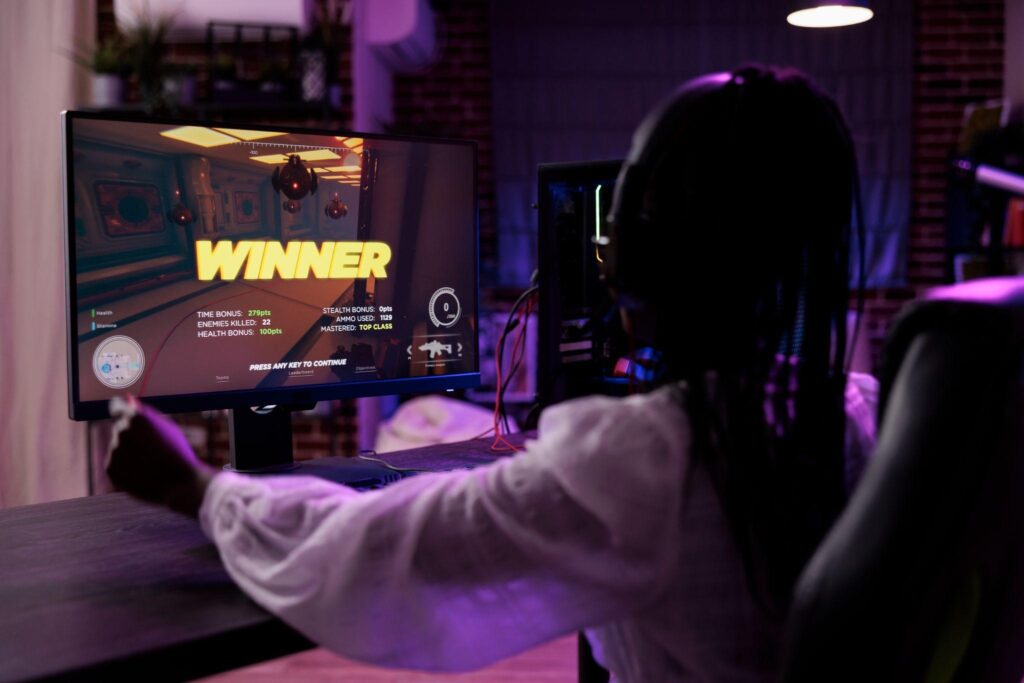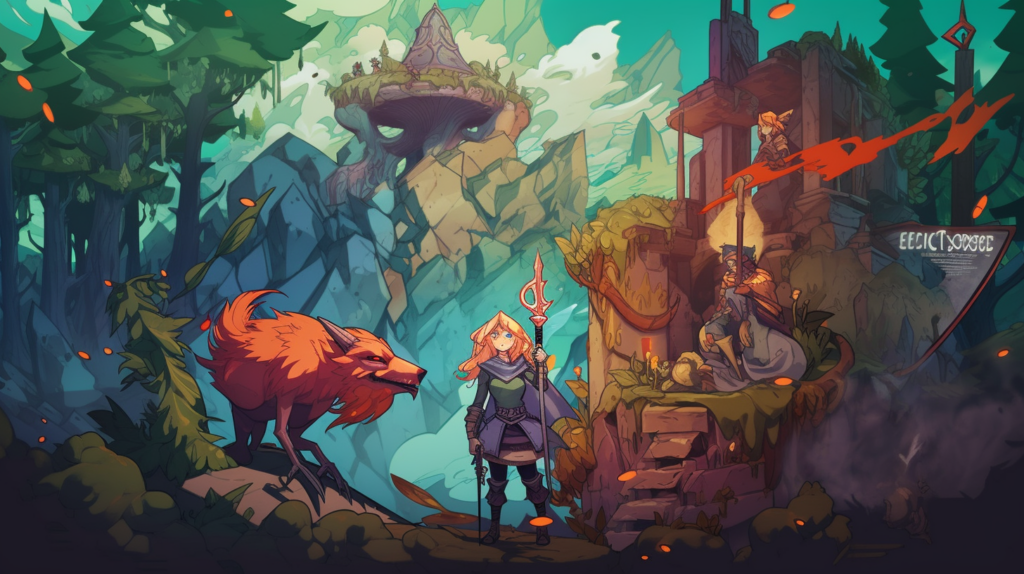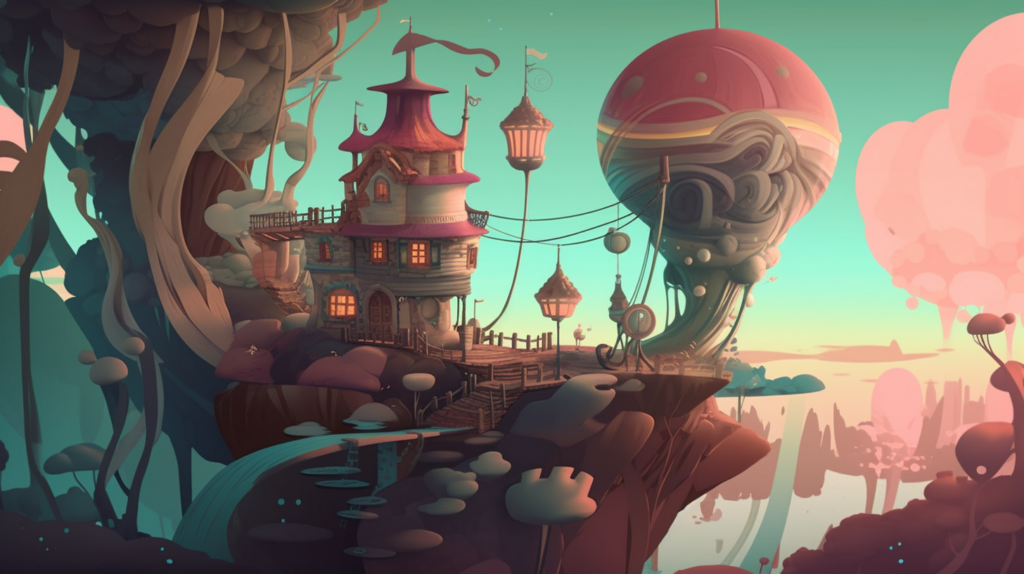The Best No Code Game Engine for 2D and 3D Games

Game development has become more accessible than ever with the rise of no-code game engines. These platforms make game creation easier for everyone, from beginners to experienced developers. In this blog post, we’ll explore the power of no code game development, including both 2D and 3D game creation, different game engines, and effective ways to monetize your games using these engines. Whether you’re new to game design or an experienced developer who’s just looking for new tools and efficient ways to bring your virtual worlds to life, this post will help you to navigate the different options that are available for you.
So, what exactly are no-code game engines? They’re platforms designed to simplify the game-making process. Many people want to create games but don’t know a programming language. No-code engines remove this barrier. Instead of writing complex lines of code, users can drag and drop elements, choose from a range of ready-made templates, and utilize straightforward tools to construct their games. From artists and educators to hobbyists and gaming enthusiasts, anyone can make a game without a coding background. By democratizing the process, no-code game engines widen the doors of the gaming industry, allowing diverse ideas to flow in.
Table of Contents
- 1 The Allure of No-Code Game Engines
- 2 Diving Into 2D and 3D Game Development
- 3 The Best No Code Game Engines for 2D and 3D Games
- 4 Exploring the Spectrum of Free and Premium No-Code Game Engines
- 5 Nurturing Communities Using No Code Game Engines
- 6 Monetization Strategies with No Code Game Engines
- 7 Charting the Future Path with No Code Game Engines
- 8 Sustainable Development and Creator Empowerment
- 9 Conclusion
The Allure of No-Code Game Engines
No-code game engines have expanded the world of game development. These platforms have become a welcome option for fledgling creators that have limited programming experience. Previously, people who wanted to make games needed to first learn how to code, making it hard to get started. By offering a user-friendly interface, free no code game engines expand the audience of would-be creators by lowering the barriers for those who can make games. And these platforms can still offer tools for experienced programmers; visual scripting can make it easier to spot mistakes and dependencies and allow developers to build faster.
No code platforms also provide more options for indie developers. Beyond just being user-friendly, they lower the barriers for both financial access and technical knowhow. Aspiring developers, students, and indie developers often face hurdles like financial constraints or are limited by the steep learning curves that are associated with conventional game development tools. No code game engines offer low-cost entry points and intuitive interfaces that allow these individuals to develop, iterate, and even publish 2D and 3D games that can be experienced and enjoyed by global audiences.
Moreover, as previously touched upon, these no code engines provide a way to rapidly develop games. Traditional game development can often be a lengthy and complex process spanning several months or even years, even with large teams of engineers. In contrast, no-code platforms can expedite this process. This is because game engine no code platforms allow developers to skip coding everything from scratch. For a 3D no code game engine, it can drastically reduce the amount of time needed to calculate and program the game by highlighting dependencies and providing constraints on code. And depending on the game engine, it can also help with cross-platform game development.
With these game-changing features – user-friendliness, availability, and rapid development – 2D no code game engines and 3D no code game engines have helped to expand the landscape for aspiring game developers, so that they are no longer bound by technical knowhow.
Diving Into 2D and 3D Game Development
There are several no-code game engines available that can make an array of games, both for 2D and 3D games. Thi means that developers can bring their innovative visions to fruition without getting mired in advanced coding needs.
2D No Code Game Engines
Often, game developers might begin their journeys by exploring no code 2D game engines, as it is both a great starting point for beginners and a well-worn path for experienced creators. The straight-forwardness of 2D game creation – whether it is a platformer, puzzle game, or interactive RPG – provides an approachable start for game development. When exploring these game engines, creators should look for intuitive drag-and-drop interfaces, and extensive asset libraries, as well as user-friendly design tools. These make the game creation process much easier to get started.
3D Game Engines
On the other hand, no code 3D game engines bring an extra layer of complexity to games because there is another dimension to consider. The best no code 3D game engines empower creators to build intricate worlds, sculpt detailed environments, and create dynamic, interactive experiences, all while keeping a developer-friendly interface that doesn’t require extensive technical knowledge. Creators can use these engines to build anything from peaceful landscapes for casual exploration, to competitive games with fast-paced controls.
Whether you’re using 2D or if you’re exploring 3D games, no-code engines are invaluable tools to help you in your game development journey. These platforms not only lower barriers but can also make the process faster and more fun, as you aren’t as encumbered with programming language intricacies. These engines help enable more developers of all skill levels to build games. So regardless of what kind of game you want to make, you can find a no code game engine that fits your needs.
The Best No Code Game Engines for 2D and 3D Games
#1. Moddio
A comprehensive no-code game development platform designed for creators of all levels. Moddio provides a free in-browser engine with all the backend technology for multiplayer games. Plus, integrated social features connect creators directly with their audience for rapid feedback and iteration.
#2. Construct 3
Popular especially among 2D game creators, Construct 3 operates fully in the browser, allowing developers to create games from anywhere. With a straightforward interface, it’s favored by educators and indie developers alike.
#3. PlayCanvas
An online 3D game engine with a visually rich editor and real-time collaboration features. PlayCanvas shines when creating WebGL and WebVR experiences, making it ideal for 3D game development without coding.
#4. GDevelop
This open-source game engine is designed for creating 2D games effortlessly. Its intuitive interface and rich event system allow for the creation of a wide range of games without writing a single line of code.
#5. Buildbox
Known for its user-friendly drag and drop interface, Buildbox allows creators to design both 2D and 3D games. With a focus on rapid game development, it’s garnered attention from indie developers looking to quickly prototype and launch their ideas.
Exploring the Spectrum of Free and Premium No-Code Game Engines
With the many options available for creators, there are a wide range of both free and paid no code game engines with expansive features for different needs. These game engines can accelerate the game development process and span diverse genres and dimensions. There are a wide range of options, each with its own distinctive features, capabilities and pricing structures. This means it’s easier than ever to find a tool that fits your own needs, whatever your background or budget.
Free No Code Game Engines
For beginners and hobbyists, free no code game engines offer a risk-free gateway for making a game. Some of the best free no-code game engines often come with a surprisingly robust suite of tools and resources, so that users can craft, modify and share their 2D and 3D games even without an upfront financial investment. These platforms encourage experimentation, learning, and development of essential skills for game creation, like design thinking, logical structuring, and crafting of the user experience. They also provide a great way to test out new ideas and get early player feedback, which can be integral in refining game mechanics and improving player engagement. And the lack of initial investment means that creators can explore, iterate, and even pivot their ideas without worrying about the overhang of upfront costs.
Premium No Code Game Engines
On the other side of the spectrum, premium no-code game engines can take things up a notch. They often offer extra functionalities, more resources, and might allow for a greater degree of customization and control. This makes them a tool that seasoned developers, or those looking to take their projects to a more professional level, tend to lean towards. They are also a great choice for indie developers and small studios.
The best no code 3D game engines that have premium pricing models usually offer more advanced graphical capabilities, an extensive range of assets, and superior support. These features help developers ensure they have the tools they need to build, optimize, and launch their games. In some cases, premium platforms may also offer some advanced features like multiplayer, detailed analytics, and powerful monetization tools that advanced game developers may depend on. These engines can help developers build more polished, immersive gaming experiences for their audiences to acquire and retain their players.
Nurturing Communities Using No Code Game Engines
With so much digital media out there, it’s difficult to stand out from the competition. This means that community building through games has become an important part of retaining players. This is easier than ever by using no code game engines.
Community-Driven Game Development
One of the hardest things to do when making a game is gauging player reaction to the games. After making a game, creators need to think about how they engage with their communities and give players reasons to stick around. Adding social features like in-game chat can help to connect with players, and builds a sense of community around the game. It’s also a great way for creators to interact with their audiences and build a dedicated fanbase.
Some no code game development platforms have this feature built in, but some do not. For example, some creators point players towards Discord as the primary way to chat with the development team and other players. It’s important for a game developer to consider how they want to implement social within their worlds and build their game accordingly.
Facilitating User Generated Content
Another great way to foster community is by including user-generated content. Creators can work with their players to offer skins or items in-game, or collaborate in marketing materials like videos. This not only improves in-game content, but also brings in a sense of ownership and engagement from the community. It also provides another avenue of monetization for game developers through in-game purchases of the user-generated content.
Creators who want to allow user generated content should consider the different no code game engines available and what features those platforms offer.
Educational and Collaborative Partnerships
No code game engines are a great choice for educational and collaborative partnerships. By leveraging these platforms, educators and developers can create interactive learning experiences that not only teach students, but are also fun to play. Many schools have used no code platforms as a great way to teach programming fundamentals.
In other words, game development goes beyond just making a game. Creators should consider the game design from the beginning, and no code engines can make the process much easier to create and refine their games. By making it easier to make games and skipping the arduous process of learning how to program from scratch, no code gaming platforms can expand the communities within games.
Monetization Strategies with No Code Game Engines
Oftentimes, developers struggle to even publish a game, let alone be able to monetize them. No-code game engines make it easier to get a finished product to market. And the different platforms provide different tools for monetization after publishing. We’ll discuss some ways to monetize games and how to utilize no code game engines to help.
In-Game Purchases and Virtual Economies
In both 2D games and 3D games, creators can create detailed, immersive worlds and then build intricate virtual economies within them. For example, developers can add in-game purchases with platform-specific or universal digital currencies. They can then offer a wide range of purchasable content, such as exclusive skins, powerful items, special characters, or distinctive abilities. This allows for not only a direct revenue stream, but also can improve the player’s immersion and overall experience within the game.
Ad Integrations
Monetization using ad integrations is another prominent strategy employed by developers. Creators can integrate ads into their games in a way that is non-intrusive, such as offering players rewards or bonuses for viewing the ads. Most no code game engines don’t have this functionality built-in, so developers may need to build the feature and integrate it on their own.
Community Contributions
Another way to increase player engagement is by tapping into the community. Especially in platforms that prioritize multiplayer experiences, creators can offer many different ways to engage with their audience. For example, developers can consider membership models for their games, or fan contributions. Offering exclusive content, special access, or extra features for contributing members can be another avenue for revenue generation that make games both more exclusive and appealing for certain segments of players.
When considering how to integrate monetization into game development, it’s important for creators to combine revenue-generation strategies with genuine, value-adding player experiences. Ultimately, a game must be well-crafted and engaging in order to get players, and a thoughtful monetization strategy can help make the game more fun and rewarding for players. While some no code game engines have these monetization tools built-in, others may require creators to build separately and integrate them into their games. These are important things to consider when building your game.
Charting the Future Path with No Code Game Engines
The world of game creation has expanded with the help of no code game engines. Developers can transform their imaginations into tangible virtual experiences more easily than ever. And with these platforms, both with no code 3D game engines and no code 2D game engines, there are endless possibilities for how they can integrate up-and-coming technologies.
AI: Crafting Intelligent and Adaptive Gaming Worlds
AI has the potential to help in no-code game development. On the programming side, AI can help to create the code that manages the game. Given the constrained inputs compared to traditional programming, developers can utilize AI to help in building the pieces of the game, whether it’s how objects interact with one another or how units move around the map.
AI can also be used within games by creating experiences that adapt and respond intelligently to player interactions. By incorporating AI into games developed through no code platforms, creators can build worlds where non-player characters (NPCs) and environments learn, adapt, and react to player behaviors and choices. This results in narratives that can be dynamically evolving, offering a much more interesting experience that is as vibrant and unpredictable as the real world.
Sustainable Development and Creator Empowerment
The goal of many of the free no code game engines is all about empowering creators. These ensure that they are equipped with the tools, knowledge and platform capabilities to build sustainable, profitable gaming experiences. These platforms provide an inclusive, accessible, and resource-rich environment that helps developers create, iterate, and grow their gaming projects.
Global Connectivity and Collaboration
Utilizing no code game game engines offers exciting opportunities for global collaborations and community building. They let creators make, share, and co-develop games with other people from different cultures, languages, and experiences. These platforms help to break down barriers and create a universal platform for creators and players to come together, learn, and co-create.
When imagining the future through the lens of no-code game development platforms, the possibilities are endless as creators have the power to innovate and build their own communities around their digital experiences. By expanding opportunities for creators to make new games, it’s easy to see how the games they create can connect people around the world.
Pioneering the No-Code Era with Moddio
There are several no-code game development platforms out there that help creators to bring their ideas to life into vibrant virtual worlds. These platforms have different features and tools that range across what tools they offer and how easy they make the game creation process.
Among these is Moddio, a no code game development platform that simplifies the process to help anyone become a game creator. Moddio specializes in multiplayer game creation, not only by providing social features like in-game chat, moderation, lobbies, and friends, but also by providing the backend technology like netcode, server orchestration, and hosting for free. Games are instantly published and available for anyone using a web browser. This means that game developers don’t need to worry about building any of the backend technology and can instead focus on building their game.
Monetization, using Modd Coins, are also included so that creators can generate revenue off their games immediately. And Moddio’s drag-and-drop editor makes powerful technology simple to use. Whether you want to build a social game just to hang out with friends, or you want to build a fast-paced shooter, it’s all possible within the no-code game editor. In this way, Moddio doesn’t just have a no-code game editor, it is a platform that enables creators to make a game from start to finish.
Conclusion
As we look at the no-code landscape, it’s exciting to see the future holds endless possibilities. Creators now have the power to build, refine, and share their own games on their own, by creating unique experiences, stories and communities. Using Moddio as their partner, they can find support in making the game development process as simple and straightforward as possible.



